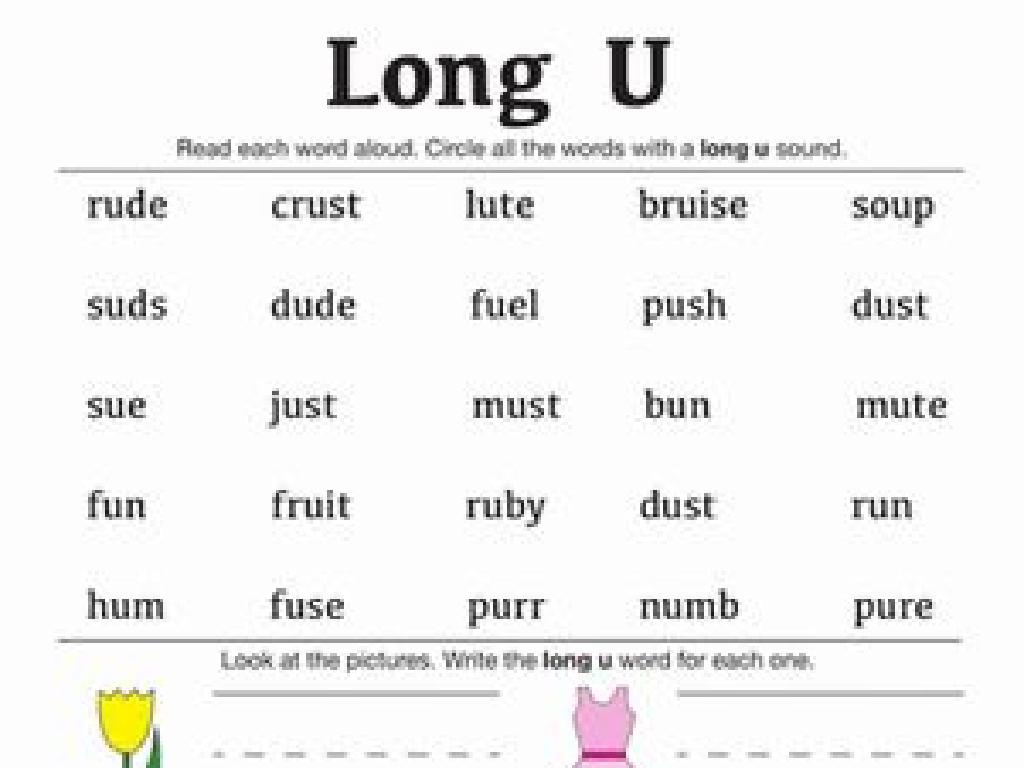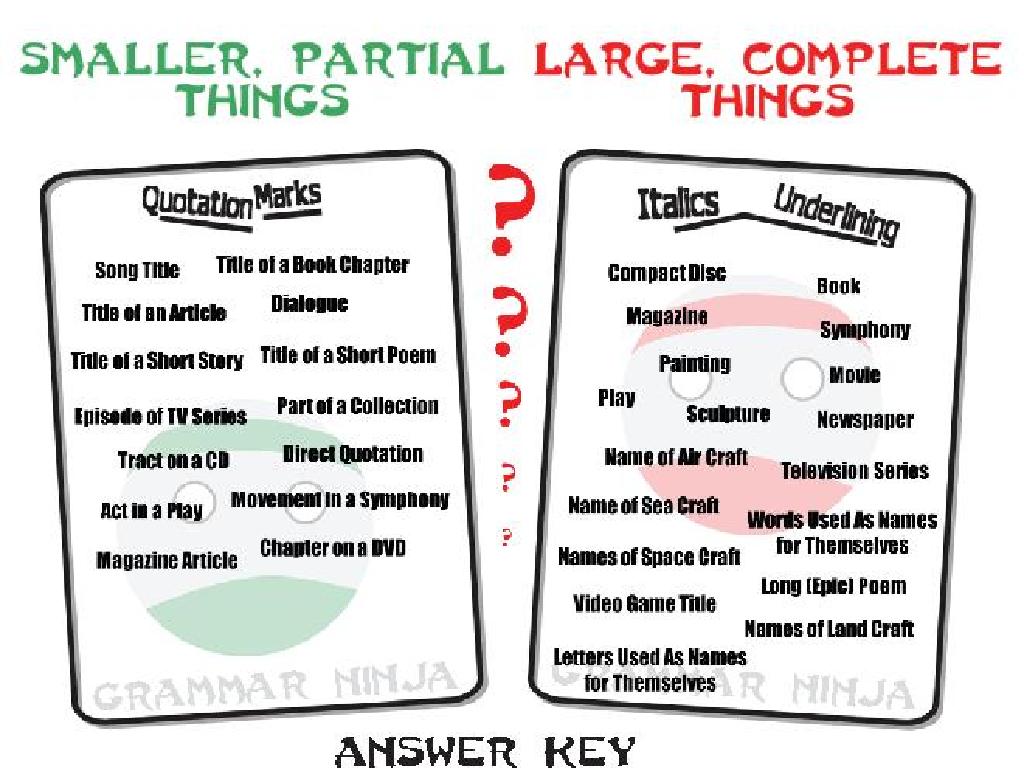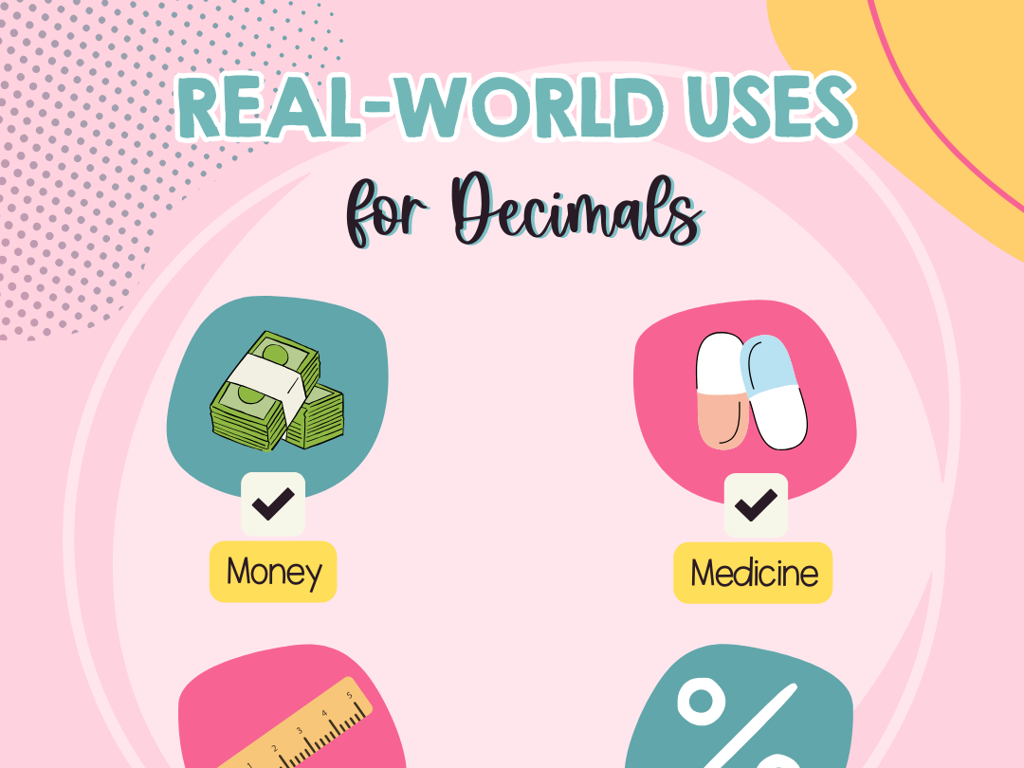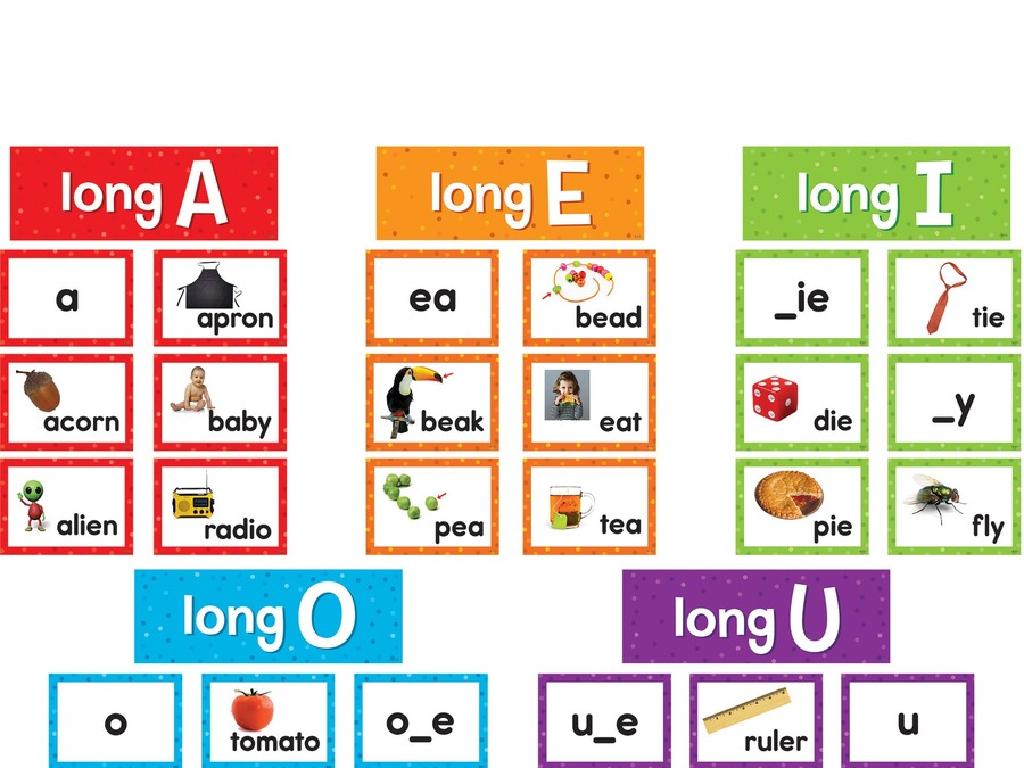Which Number Is Largest?
Subject: Math
Grade: Pre-k
Topic: Compare Numbers
Please LOG IN to download the presentation. Access is available to registered users only.
View More Content
Math Adventures: Big and Small Numbers
– Greet our little mathematicians
– Today’s play: Learning numbers!
– Discover big and small numbers
– We’ll see which numbers are bigger or smaller
– Fun activities with number sizes
– Use toys to compare numbers and see which is largest
|
This slide is designed to introduce Pre-K students to the concept of comparing numbers by size. Start the lesson with a warm and enthusiastic greeting to engage the children. Explain that numbers can be big or small, and today’s focus will be on identifying which numbers are larger. Use visual aids like number cards or toys to help children understand the concept of size in a tangible way. Plan a series of fun, hands-on activities where children can practice comparing numbers with objects they are familiar with, such as stacking blocks or lining up toy cars, to visually demonstrate ‘more than’ and ‘less than’ concepts. The goal is to create an interactive and enjoyable learning experience that will help them grasp the basic idea of number comparison.
Exploring Numbers: Which Is Largest?
– Numbers help us count
– They show quantity
– Numbers range from small to big
– For example, 1, 2, 3 are small, 7, 8, 9 are bigger
– Comparing to find the largest
– We’ll practice which of two numbers is bigger
|
This slide introduces Pre-K students to the concept of numbers and their sizes. Start by explaining that numbers are used to tell us how many of something we have. They can be used to count objects, people, or even to measure things like how long or how heavy something is. Highlight that numbers come in different sizes; some are small, and some are big. Use visual aids like number cards or objects to show small numbers like 1, 2, 3, and then compare them to bigger numbers like 7, 8, 9. Encourage the students to think of numbers as indicators of quantity and introduce the concept of comparing numbers to find which is larger. Plan a hands-on activity where students can practice this skill by comparing sets of objects or number cards to reinforce the concept.
Big Numbers and Small Numbers
– Understanding big and small
– Big numbers mean more
– Like more cookies vs fewer cookies
– Small numbers mean less
– Like fewer blocks vs more blocks
– Comparing to find the largest
|
This slide introduces the concept of magnitude in numbers to Pre-K students. Begin by explaining that some numbers are bigger, meaning they represent a larger amount of items, while smaller numbers represent a lesser amount. Use tangible examples like cookies or blocks to illustrate this concept, as children this age understand better with visual and physical representations. Encourage the students to practice by comparing groups of items to identify which has more and which has less. The goal is to build a foundational understanding of quantity comparison, setting the stage for learning to identify the largest number among a set.
Let’s Compare Numbers!
– Comparing: More or Less?
– Comparing helps us see which number is bigger or smaller.
– Count with fingers
– Use fingers to count and compare two numbers.
– Try with examples
– Look at different sets of numbers and decide which is more.
– Which number is largest?
|
This slide introduces the concept of comparison to Pre-K students, focusing on understanding which number is larger. Start by explaining that comparing is like playing a game to find out which number is bigger or smaller. Encourage the students to use their fingers to count, as this tactile method is effective for young learners. Provide simple examples, such as comparing 2 apples to 3 apples, and ask the students which group has more. Reinforce the concept by asking questions like ‘Do you have more fingers on your left hand or your right hand?’ and guide them to understand that the hand with 5 fingers has more. This interactive approach helps solidify the concept of comparison in a fun and engaging way.
Which Number is Largest?
– Understanding largest numbers
– The last number in counting is the largest
– Comparing 3 and 5 apples
– If you count: 1, 2, 3… 5 comes after 3
– 5 is larger than 3
– More apples means a larger number
– Let’s practice with examples!
|
This slide introduces the concept of comparing numbers to determine which is larger. Start by explaining that the largest number is the one that comes last in the counting sequence. Use tangible examples like apples to illustrate the point, as this is relatable for Pre-K students. Show that 5 apples represent a larger quantity than 3 because 5 comes after 3 when counting. Encourage the students to practice with more examples, using objects they are familiar with, to reinforce the concept. The goal is to make them comfortable with the idea of comparing quantities and understanding the concept of ‘larger than’ in a fun and interactive way.
Practice Time: Counting Toys
– Observe groups of toys
– Count toys in each group
– Find the largest number
– Which group’s count is higher?
– Largest number comes last
– Remember counting sequence
|
This slide is designed for a hands-on activity where students will practice counting and comparing numbers in a fun and engaging way. Set up different groups of toys and ask the children to count the number of toys in each group. They should then determine which group has the most toys. Reinforce the concept that the largest number is the one that comes last in the counting sequence. For example, if one group has 3 toys and another has 5, 5 is larger because it comes after 3 when we count. Encourage the students to count out loud and use their fingers if necessary. This activity will help solidify their understanding of number magnitude and counting order.
Class Activity: Number Hunt!
– Let’s go on a Number Hunt
– Find groups of objects in class
– Which group has the most items?
– Work together to compare numbers
– Help each other and discuss your findings
|
This activity is designed to be a fun and interactive way for Pre-K students to understand the concept of comparing numbers by finding and grouping objects. Set up various stations around the classroom with different numbers of items. Encourage the children to work in small groups to count the items at each station and determine which group has the largest number. Provide guidance on how to count and compare numbers effectively. Possible variations of the activity could include grouping by color, size, or type of object to add layers of complexity. The goal is to foster teamwork and enhance their number recognition and comparison skills.
Great Job on Comparing Numbers!
– Amazing work today!
– Largest number = Biggest cake piece
– Think of the number line as slices of cake, the further you go, the bigger the slice!
– Practice makes perfect
– Excited for more Math Adventures!
|
This slide is meant to congratulate the Pre-K class on their efforts in learning to compare numbers. Reinforce the concept by likening larger numbers to bigger pieces of cake, which is a relatable analogy for young children. Encourage them to keep practicing with number comparisons at home, perhaps using toys or snacks to make it practical and fun. Let them know that you’re looking forward to seeing them in the next class and continue the journey of Math Adventures, which will keep them excited about learning.






